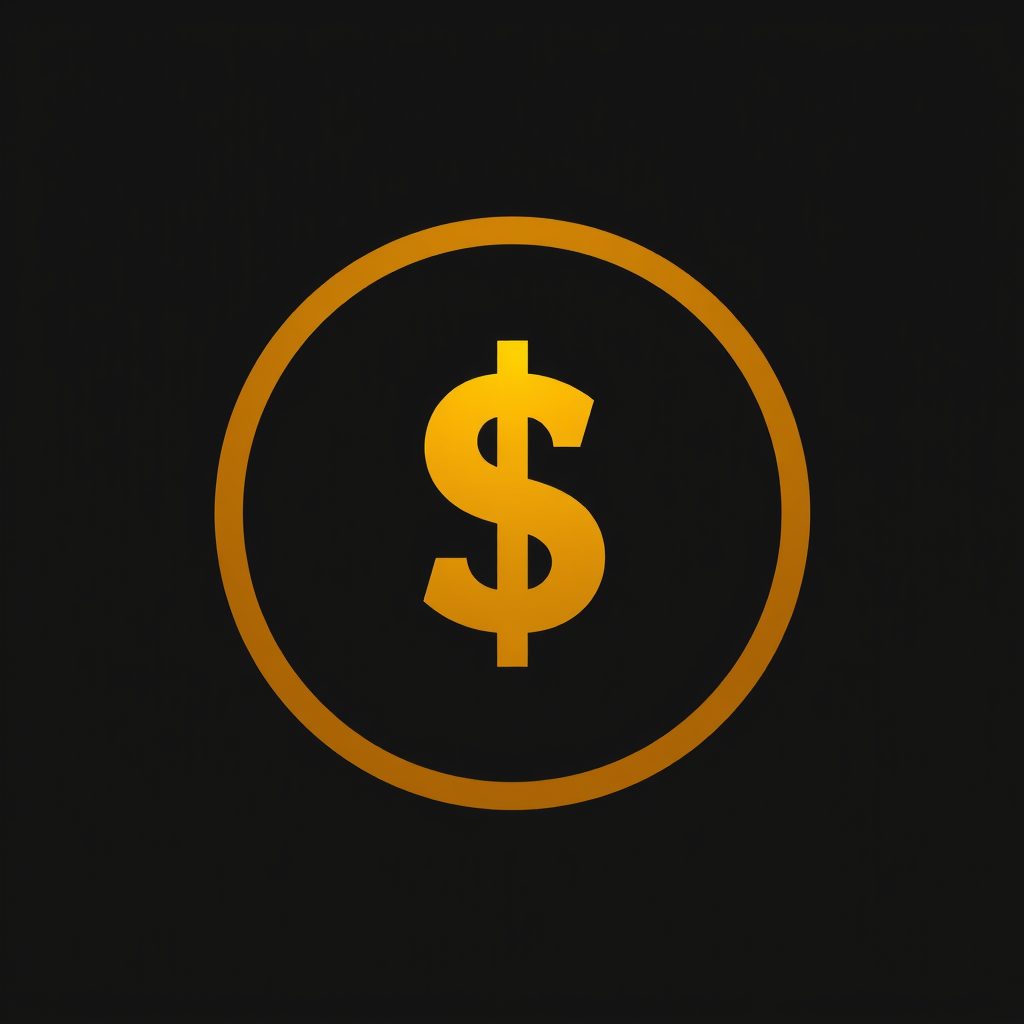By Cap Puckhaber, Reno, Nevada
I’m Cap Puckhaber, a marketing professional, amateur investor, part-time blogger, and outdoor enthusiast. Today on SimpleFinanceBlog.com, we’re presenting a comprehensive guide to investing and breaking down how to start from square one. We’ll cover the foundational steps for beginners, demystify the incredible power of compound interest, and explore how traditional assets like gold can fit into a modern strategy. This is the cohesive guide I wish I had when I started, especially now in mid-2025, with economic uncertainty still hanging in the air.
We’ve all been there. We know we need to invest, but the sheer volume of information feels like trying to drink from a firehose. You see ads for slick trading apps, hear about meme stocks on social media, and listen to gurus promise guaranteed returns. This paradox of choice often leads to paralysis, where the fear of making the wrong move stops us from making any move at all. My goal here is to cut through that noise, give you actionable steps, and provide the data to back it up so you can begin building your financial future with confidence, right here from Reno or wherever you call home.
First Things First: Why Should You Even Bother Investing?
Let’s get one thing straight: simply saving money isn’t enough anymore. The cash you stash in a standard savings account is actually losing its buying power every single day thanks to inflation. Think about it in local terms. A few years ago, a great cup of coffee in Reno might have cost $3. Today, that same coffee is likely pushing $4.50 or $5. That’s inflation in action. According to the U.S. Bureau of Labor Statistics, the $100 you had in January 2004 would only have the purchasing power of about $62 today. Your money is effectively shrinking if it’s not growing.
Investing is the primary way for most people to combat inflation and genuinely build wealth. It’s the process of putting your money to work for you, allowing it to grow and generate more money. This isn’t a strategy reserved for the wealthy; it’s a necessary tool for anyone who wants to retire comfortably, afford major life goals, or simply achieve financial security. The alternative is the opportunity cost of standing still—the potential growth you miss out on for every year your money sits idle.
The Engine of Your Wealth: Understanding Compound Interest
Before you buy a single stock, you need to understand the most powerful force in finance: compound interest. Albert Einstein supposedly called it the “eighth wonder of the world,” and for good reason. It’s the secret sauce that can turn small, consistent investments into a substantial nest egg over time. It is the single most important concept for a beginner to grasp.
What is Compound Interest, Really?
In the simplest terms, compound interest is earning returns on your returns. Think of it like a snowball rolling down a hill. It starts small, but as it rolls, it picks up more snow, getting bigger and bigger at an ever-increasing speed. Your investment works the same way. The interest or gains your investment earns are reinvested, and then they start earning gains of their own.
Let’s use a quick example. Say you invest $1,000 and get an 8% annual return.
- After year one, you’ve earned $80 in interest, so your new total is $1,080.
- After year two, you earn 8% on the new total ($1,080). That’s $86.40 in interest, bringing your total to $1,166.40.
- After year three, you earn 8% on $1,166.40, which is $93.31.
That extra few dollars might not seem like much at first, but over 20 or 30 years, that accelerating growth becomes a financial avalanche. This is why starting early is your biggest advantage.
The Rule of 72: A Quick Mental Shortcut
A great way to visualize compounding is the Rule of 72. It’s a simple formula to estimate how long it will take for an investment to double in value. Just divide 72 by your expected annual rate of return.
- If your investment earns an average of 8% per year, it will take approximately 9 years to double (72/8=9).
- If it earns 6%, it will take 12 years to double (72/6=12).
This rule powerfully illustrates how a seemingly small difference in your return rate can dramatically change your long-term results.
Putting Compounding to Work for You
The best places to let your money compound are in tax-advantaged retirement accounts. Accounts like a company-sponsored 401(k) or a personal Individual Retirement Arrangement (IRA) are designed for long-term growth. Their “superpower” is that they allow your investments to grow without being taxed on the gains every single year. This tax-deferred or, in the case of a Roth IRA, tax-free growth means more of your money stays invested and working for you, which supercharges the compounding effect. If you’re trying to decide which is right for you, our Traditional vs. Roth IRA guide can help you sort through the details.
Your Action Plan: 5 Steps to Making Your First Investment
Okay, theory is great, but let’s get practical. How do you actually go from having cash in the bank to owning your first investment?
1. Define Your Financial Goals
This step is critical. Why are you investing? The answer dictates your entire strategy. Are you investing for retirement in 40 years? Your timeline is long, so you can likely take on more risk for higher potential returns. Are you saving for a down payment on a house in five years? Your timeline is much shorter, so you need a more conservative strategy that prioritizes protecting your principal, perhaps using high-yield savings accounts or short-term bonds.
2. Choose the Right Type of Account
For most beginners, the easiest way to start is by opening an account with a low-cost online brokerage. Reputable brands like Fidelity, Charles Schwab, or Vanguard are excellent choices. Another fantastic option for beginners is a robo-advisor like Betterment or Wealthfront. You simply answer questions about your goals and risk tolerance, and their algorithm builds and manages a diversified portfolio for you. It’s the ultimate set-it-and-forget-it approach. For a detailed comparison, check out this excellent guide from NerdWallet on the best brokerage accounts for beginners.
3. Fund Your Account
You don’t need a fortune to start. Seriously. Many brokerages have no minimum deposit. Start with an amount you are comfortable with, even if it’s just $50 or $100. The most important thing is to build the habit. Thanks to fractional shares, a feature offered by most major brokerages, you can buy a slice of a high-priced stock like Apple or Amazon for as little as $5.
4. Pick Your First Investments
This is the part that trips most people up. Instead of trying to find the next Amazon, the smartest move for a beginner is to buy a broad-market, low-cost index fund or ETF (Exchange-Traded Fund). An S&P 500 index fund, for example, lets you own a tiny slice of 500 of the largest U.S. companies. It’s instant diversification. An ETF is a basket of investments (like stocks or bonds) that trades on an exchange just like a single stock. They are incredibly popular because of their low costs and simplicity. Historically, the S&P 500 has averaged an annual return of about 10%, though past performance never guarantees future results. You can learn more about the S&P 500 from this Investopedia article.
5. Automate and Be Consistent
Set up automatic transfers from your bank account to your investment account every week or month. Treating your investments like any other bill is the key to consistency. This strategy, known as dollar-cost averaging, ensures you keep investing whether the market is up or down, removing emotion from the process.
Building a Resilient Portfolio: Why Diversification Isn’t Just a Buzzword
You’ve probably heard the phrase “don’t put all your eggs in one basket.” In investing, that’s called diversification, and it’s your number one defense against risk. Think of your portfolio like a basketball team. You wouldn’t want a team of five identical star shooters; you also need defenders, rebounders, and playmakers. Similarly, your portfolio needs different types of assets that behave differently in various market conditions.
Your core portfolio should include a mix of stocks and bonds. Stocks provide the engine for growth, while bonds typically provide stability when the stock market is volatile. Finding the right mix is key, which is why we created our Definitive Guide to Portfolio Investment and Risk Management. For a closer look at the role bonds play, check out our Bond Investing for Beginners guide.
Once you have a solid foundation, you might explore other assets. Some people with a higher risk tolerance allocate a small portion of their portfolio to things like cryptocurrency. If that interests you, start with our Cautious Beginner’s Guide to Crypto Investing. Others might try more active strategies, but be warned, things like day trading are extremely risky, as we cover in our Day Trading vs. Forex guide.
What About Gold? A Beginner’s Guide to this “Safe Haven” Asset
During times of economic uncertainty or when people are worried about a recession, you’ll often hear talk about gold. It’s been seen as a store of value for millennia, but how does it actually perform, and should a beginner consider it?
Gold’s Historical Performance vs. The Stock Market
Gold’s primary appeal is its tendency to perform differently than the stock market. It’s often called a “safe haven” asset because investors flock to it when they’re fearful. While the S&P 500 generally provides better long-term growth, gold can protect your portfolio’s value during downturns.
Let’s look at the data. During the 2008 financial crisis, the S&P 500 plummeted nearly 37% for the year. Gold, on the other hand, gained about 5.5%. During the inflationary stagflation of the 1970s, stocks went nowhere while gold surged from $35 to over $800 an ounce. It’s not about choosing one over the other; it’s about understanding their different roles in a diversified portfolio.
How to Actually Invest in Gold
If you decide to add gold to your portfolio, you have a few options:
- Physical Gold (Coins and Bars): You can buy physical gold from reputable dealers. Here in Reno, places like Sierra Coin & Gold or The Reno Gold Exchange are known options. The main benefit is that you own a tangible asset. The downsides are storage and insurance costs, and the price you pay will include a “premium” over the market spot price. Also, be aware that when you sell physical gold for a profit, it’s taxed as a “collectible” by the IRS at a higher rate (up to 28%) than long-term stock gains.
- Gold ETFs (e.g., GLD, IAU): This is the easiest way for most beginners. You can buy and sell shares of a gold ETF just like any other stock in your brokerage account. These funds hold physical gold in vaults, and the share price tracks the price of gold. Just be sure to look at the fund’s expense ratio—the small annual fee you pay for the management of the fund.
- Gold Mining Stocks: You can also invest in the companies that mine gold. This is an indirect play. The company’s stock price is influenced by the price of gold but also by its own operational efficiency, management, and new discoveries. It carries a different, and often higher, set of risks.
Putting It All Together: Common Mistakes and Your Next Steps
Starting your investing journey is a marathon, not a sprint. The path is rarely a straight line, but by avoiding common pitfalls, you can dramatically increase your odds of success.
Three Beginner Mistakes to Avoid
- Panic Selling: The market will go down. It’s a normal part of the cycle. The worst mistake you can make is selling your investments in a panic when prices drop, locking in your losses. Stay the course.
- Trying to Time the Market: Nobody can consistently predict what the stock market will do tomorrow. Don’t try to be a hero and jump in and out. “Time in the market” is vastly more important than “timing the market.”
- Ignoring Fees: Small fees can have a huge impact on your returns over time due to the reverse power of compounding. Always choose low-cost index funds and ETFs whenever possible. A 1% fee might sound small, but it can consume nearly a third of your potential returns over your lifetime.
Your Path Forward
The key takeaways are simple: start as early as you can, be consistent with your contributions, and stay diversified. Let compound interest do the heavy lifting for you over the long term.
Don’t feel pressured to become an expert overnight. Your first step is to just get in the game. As you get more comfortable, you can continue your education. To go deeper, I highly recommend checking out our lists of the best investing books and websites and the best investing podcasts for beginners. And for those who want to learn a bit more about analyzing individual stocks, understanding concepts like trading volume is a great next step, which we cover in How to Use Volume to Confirm Stock Breakouts.
Investing is the most powerful tool you have for building a secure financial future. Take that first step today. Your future self will thank you for it.
Check out my latest blog on DeepSeek is Changing Ai Investing by Cap Puckhaber
If you haven’t seen it yet check out my blog on Tesla’s Earnings Miss by Cap Puckhaber
New to Simple Finance Blog is my take on Navigating 1099 Tax Forms by Cap Puckhaber
Cap Puckhaber breaks down AI and the potential for a bubble or a breakthrough
Investing Blog for Beginners
Hosted by Cap Puckhaber of Black Diamond Marketing Solutions, this investing blog offers daily articles on investing, savings, bonds, interest rates, mortgages, and more.



About the Founder / Author
Cap Puckhaber is a seasoned marketing strategist and finance writer, based in Reno, Nevada with over 20 years of experience investing, marketing and helping small businesses grow.
He offers expert advice on how to save for retirement, how to use a retirement calculator and the difference between T-Bills and CDs.
Cap Puckhaber shares actionable insights on how to promote your business locally for free and on trending platforms like X.
He shares his personal investment journey, how to use trade volume to predict breakouts, and his take on covered call strategies.

Follow Cap Puckhaber Online
Connect with Cap Puckhaber on Facebook
See Real-Time Thoughts on X
Read In-Depth Articles on Medium
Subscribe to Cap Puckhaber’s Substack Newsletter
Follow Cap Puckhaber’s Company Page on LinkedIn
View Our Agency Profile on DesignRush
See Cap Puckhaber’s Agency on Agency Spotter
Explore Technical Projects on GitHub
See Cap Puckhaber’s Creative Portfolio on Behance
Learn more about my company on Crunchbase
Join Cap Puckhaber’s Conversation on BlueSky
Follow My Updates on Mastodon

Backpacker, Marketer, Investor, Blogger, Husband, Dog-Dad, Golfer, Snowboarder
Cap Puckhaber is a marketing strategist, finance writer, and outdoor enthusiast from Reno, Nevada. He writes across CapPuckhaber.com, TheHikingAdventures.com, SimpleFinanceBlog.com, and BlackDiamondMarketingSolutions.com.
Follow him for honest, real-world advice backed by 20+ years of experience.


